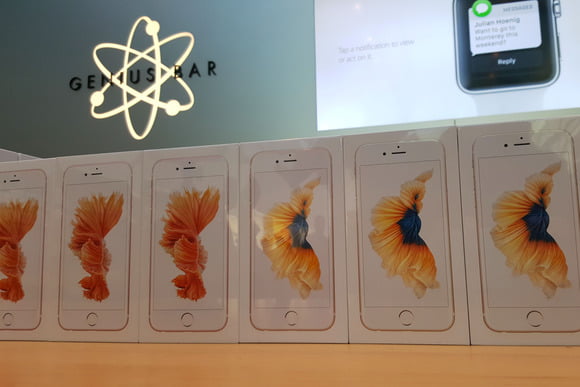

It’s important to admit ignorance; otherwise, you’re arrogant. I had no idea that the extended-warranty plans, AppleCare and AppleCare+, could be refunded on a pro-rata basis for the unused remaining portion, despite ostensibly being a veteran reporter of things Apple. This wouldn’t change any actions I’ve taken nor my recommendations. But it does shift some of the discussion around iPhone installment plans, which I just wrote about, describing swapping my phone from AT&T to the Apple iPhone Upgrade plan.
But there it is on Apple’s site! Reader “suspiciouschicken” alerted us in the comments on the iPhone-swap article. (It’s always the most suspicious chickens who notice these things.) Apple says its formula varies by country. This is because countries and regions have varying rules about how warranties must be honored and rebated. In the United States, the formula is, paraphrased:
“Original cost pro-rated for time remaining less the value of any service used and less a cancellation fee of either $25 or 10 percent of the pro-rated remaining value, whichever is lower.”
So on a $99 AppleCare+ plan after 12 months exactly and no service incidents, you’d have $49.50 in value left. Since $25 is more than 10 percent of that amount ($4.95), Apple would subtract that lesser value, for a net of about $44. While not huge, it’s not nothing, either. For a computer, it could be larger. A $349 MacBook Pro plan after a year would result in $233 remaining in value, less $23.30, or about $209.
To claim the refund, you have to contact Apple by phone, fax, or snail mail, and you have to provide the device’s serial number, the plan’s agreement number, and proof of purchase of the plan as an original sales receipt. Apple may waive the receipt requirement if both the device covered and the service plan were both purchased directly.
If it’s worth getting, it’s worth selling?
AppleCare for Mac, Apple Displays, and Apple TV (and some other equipment purchased at the same time) and AppleCare+ for the iPhone, iPad, Apple Watch, and iPod touch are extended warranties. Computers receive three years of coverage, while AppleCare+ covers two. All the plans extend unlimited phone support and some other customer-service options from 90 days to the full length of the plan.
 MICHAEL DEAGONIA
MICHAEL DEAGONIABoth kinds of plans cover manufacturing defects and component failures under normal working conditions for the plan’s duration. With AppleCare+, you are covered with an extra but modest deductible for up to two accidents; the fee you pay varies by device and model. The iPhone 6s and 6s Plus have a $99 fee for accidents, while older iPhones cost $79 per incident.
The most particular advantage is that if you get a battery that starts to sputter during the coverage period, charging no more than 80 percent of its capacity, the plan covers its replacement.
Consumer advocates typically advise never purchase extended warranties. The price ranges from $99 for an iPhone 6/6 Plus for AppleCare+ up to $349 for a MacBook Pro. If something goes wrong in year two for a mobile or years two or three for a Mac or similarly covered equipment, will it pay back all those costs across multiple warranties you purchase?
If you own enough hardware, on average it should not. I have never, ever taken the offered and super-expensive rental-car insurance that is mostly profit for those companies. Over many years of car rentals, I’ve saved thousands of dollars, and thus any future accident not covered by the limits of my own insurance policy will still leave me ahead. (Pro tip: Many premium credit cards with annual fees include a variety of free rental-car insurance when used to pay for the rental.)
However, I’ve always bought AppleCare for laptops. The one time I forgot to do so in time, I had a $300 repair (AppleCare was $249) in its third year. On other covered laptops, I’ve sometimes had the equivalent of thousands of dollars of “free” repairs for particularly troublesome models, one heading back to the Apple shop at least three times that I can recall. I also typically buy AppleCare+ for iPhones, and it’s paid off with nearly every model I’ve kept for more than a year. For desktops, it’s never seemed worthwhile, and I’ve never had a problem within three years I couldn’t fix cheaply myself.
AppleCare can seem like a plus when selling a used piece of hardware, because the buyer gets the assurance that anything non-obvious about the device they are purchasing is likely a defect that would be repaired for free. It’s an extra bit of good luck. This is why I wouldn’t retroactively change my behavior or my advice: I’ve either used the warranty for a repair past the first year; owned the hardware past the warranty period’s end; or used its remaining months as a feature when selling a device.
But if your Mac has bit the dust because someone hit it with a baseball bat, you’re trading in an iPhone to a carrier for an upgrade, or you’ve lost equipment entirely, refunding AppleCare makes a lot of sense.
[source :-macworld]
